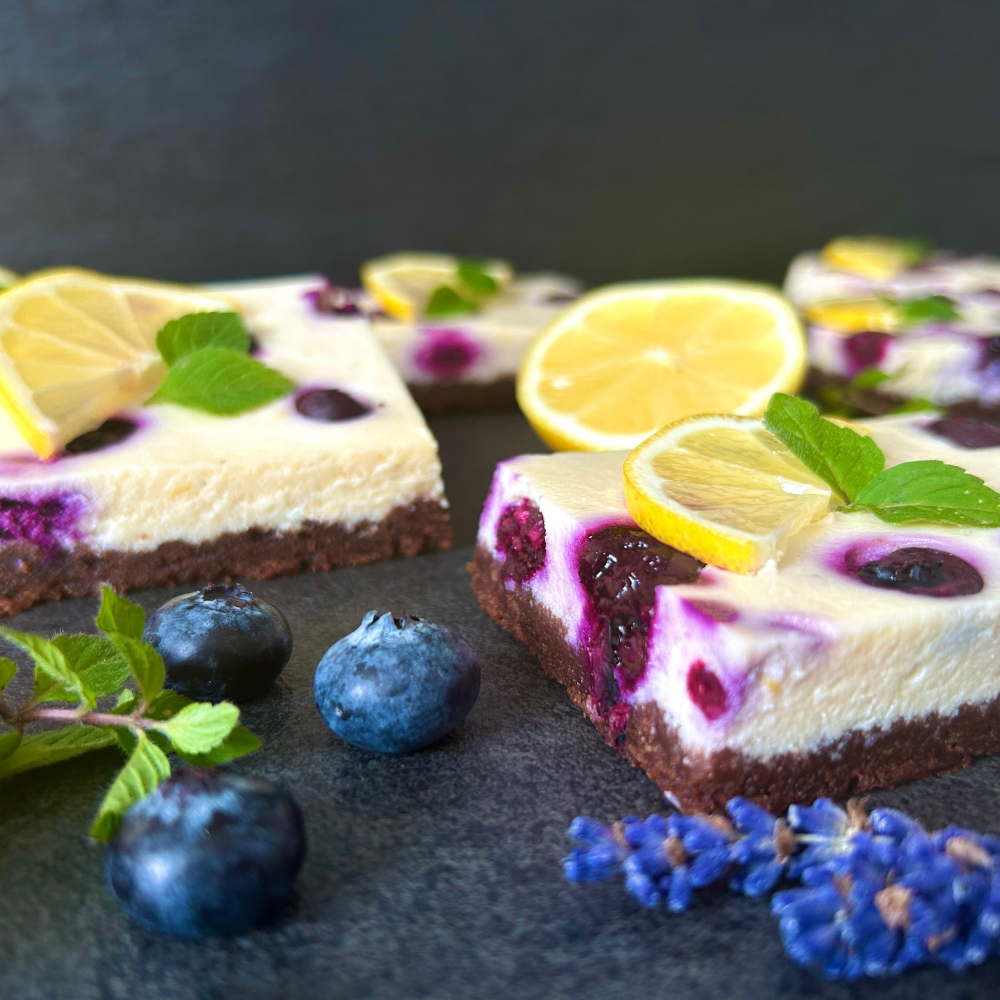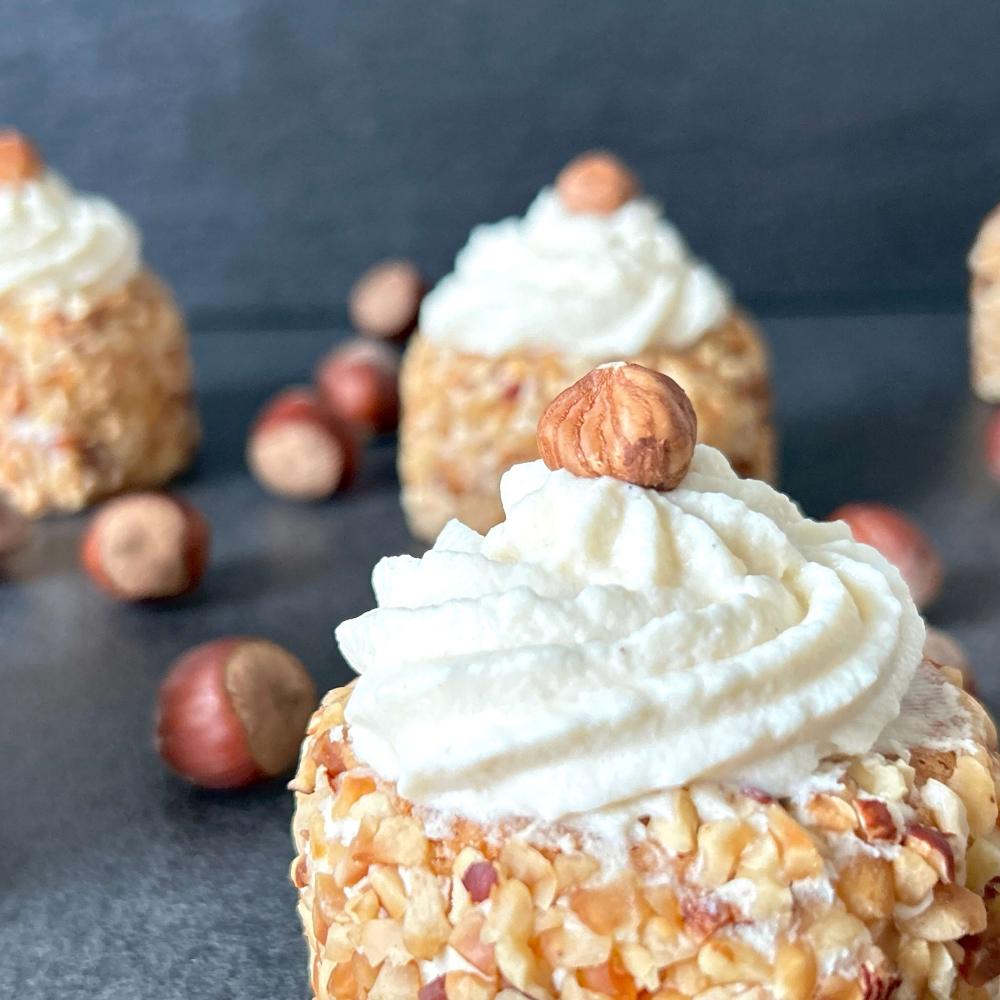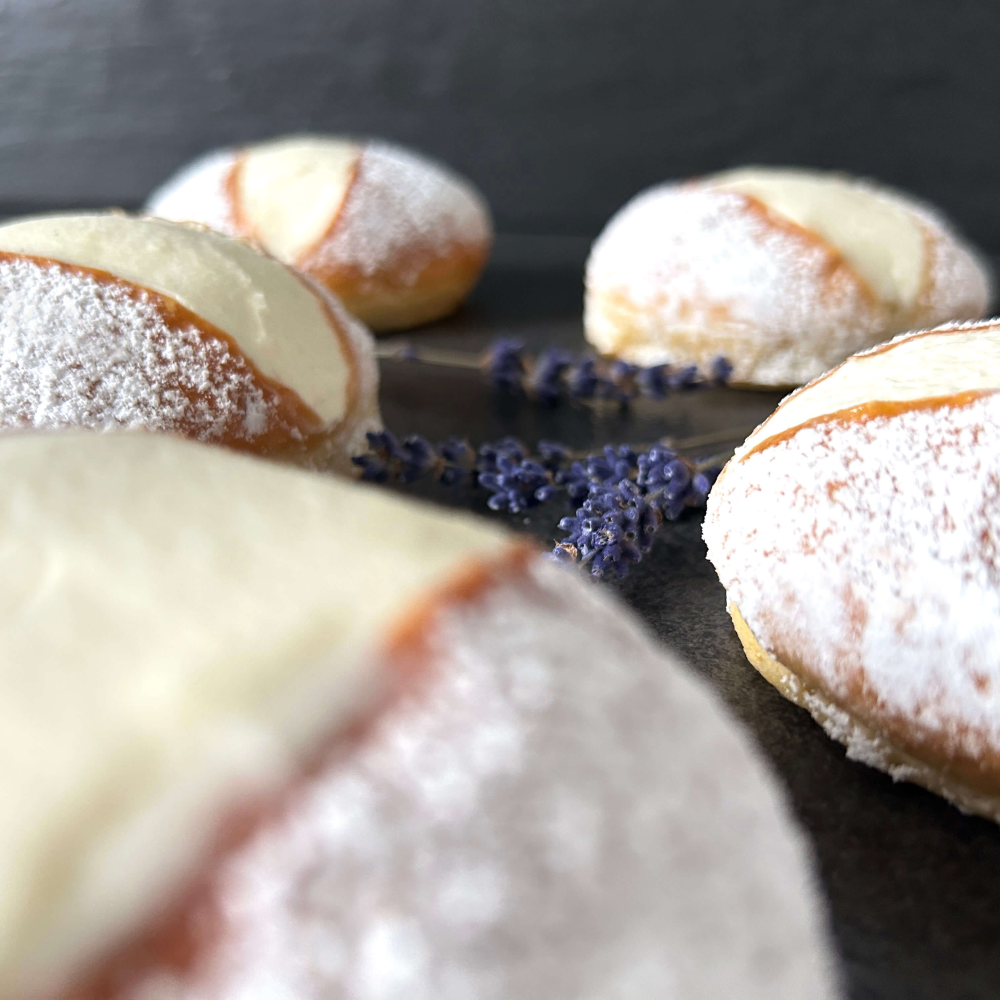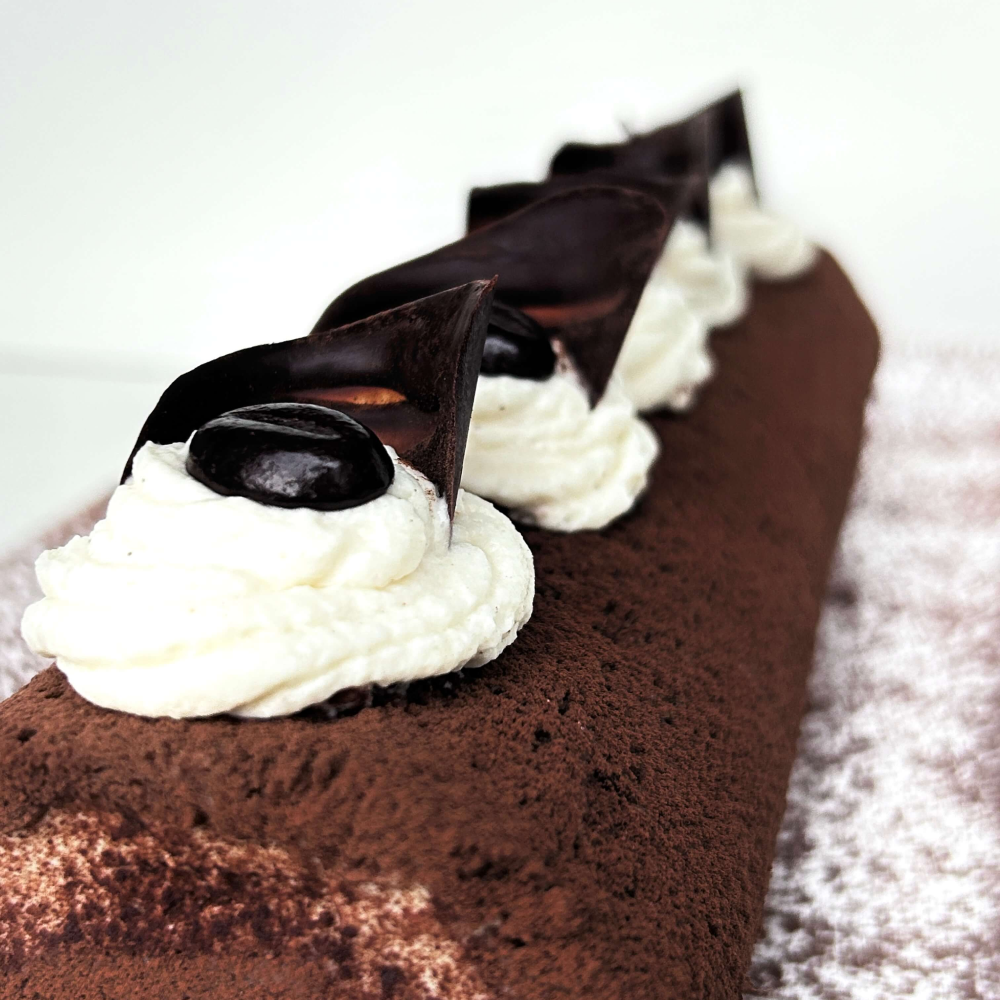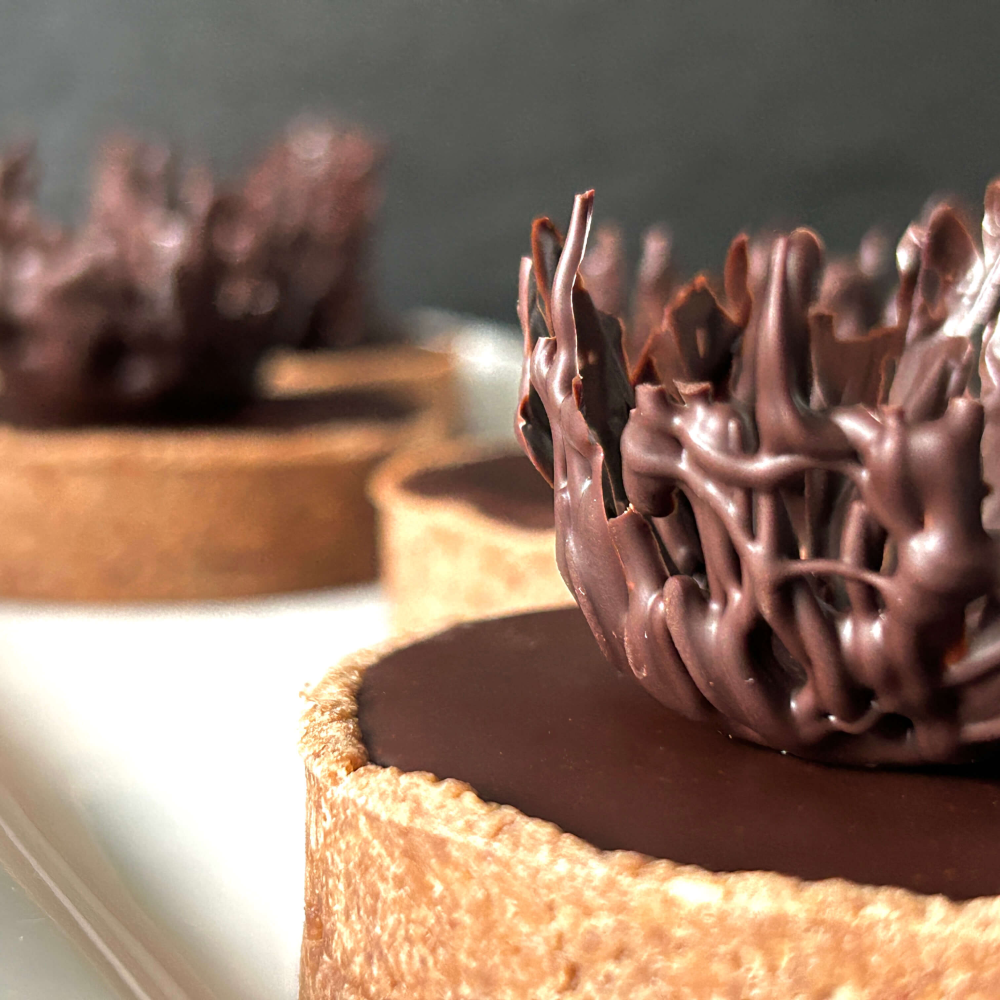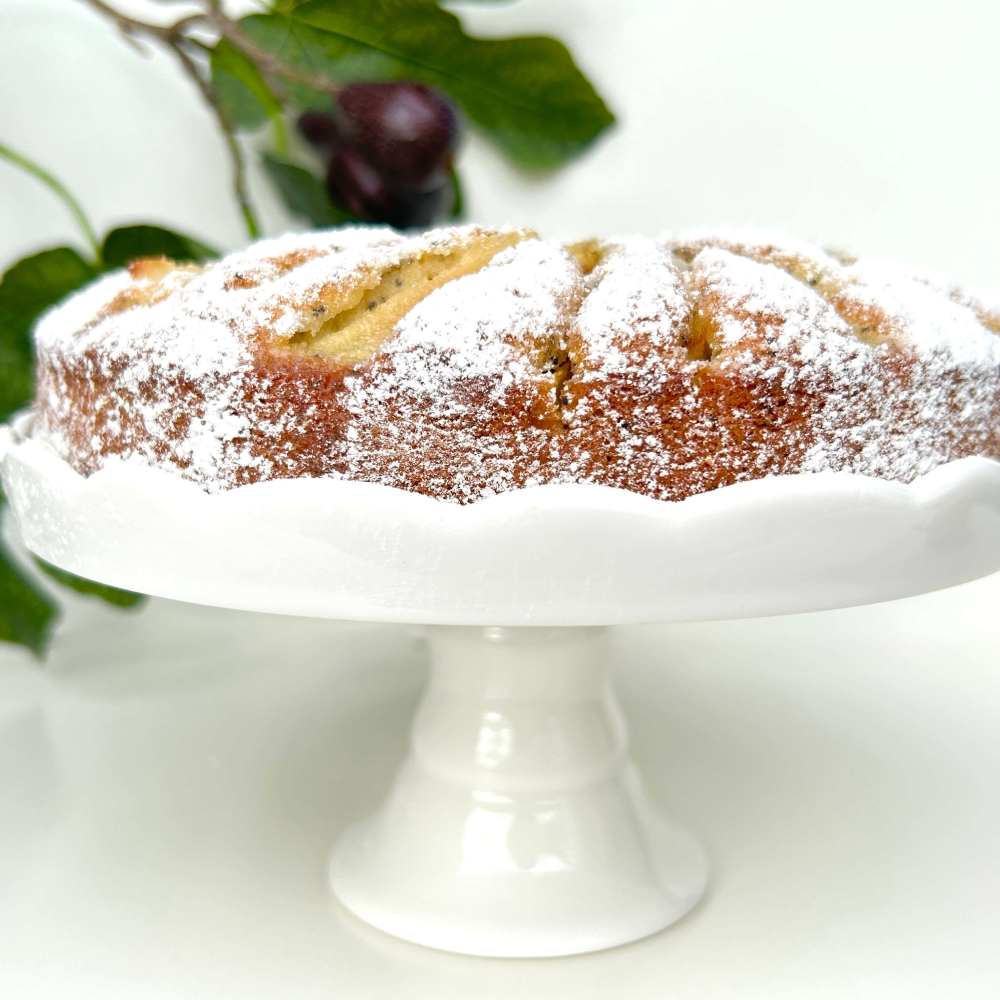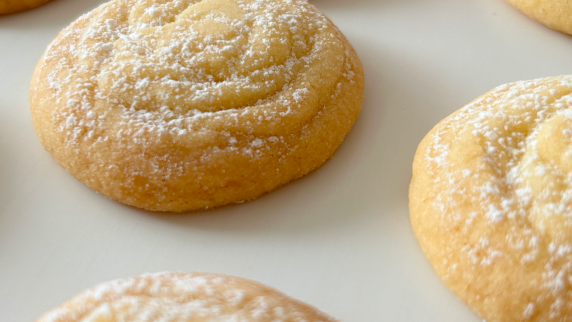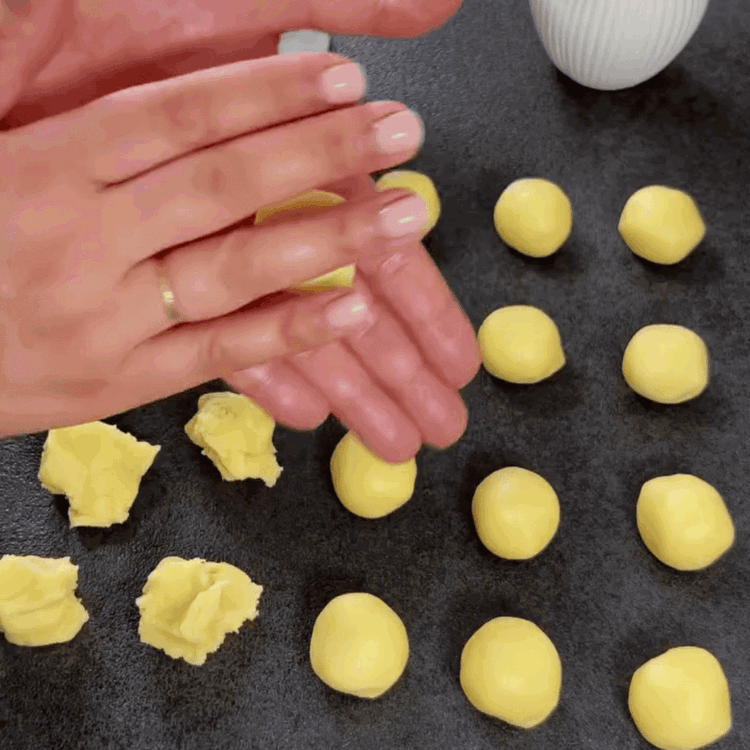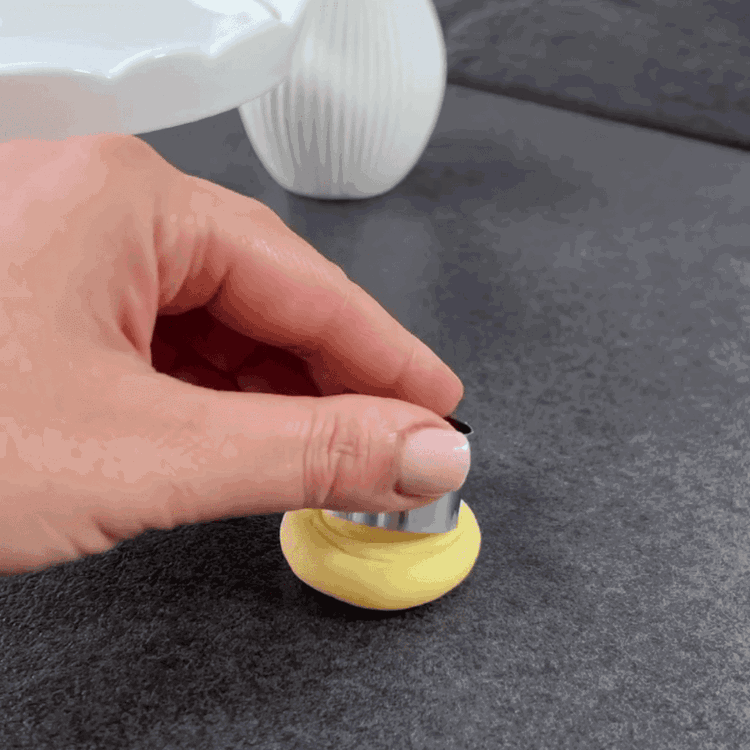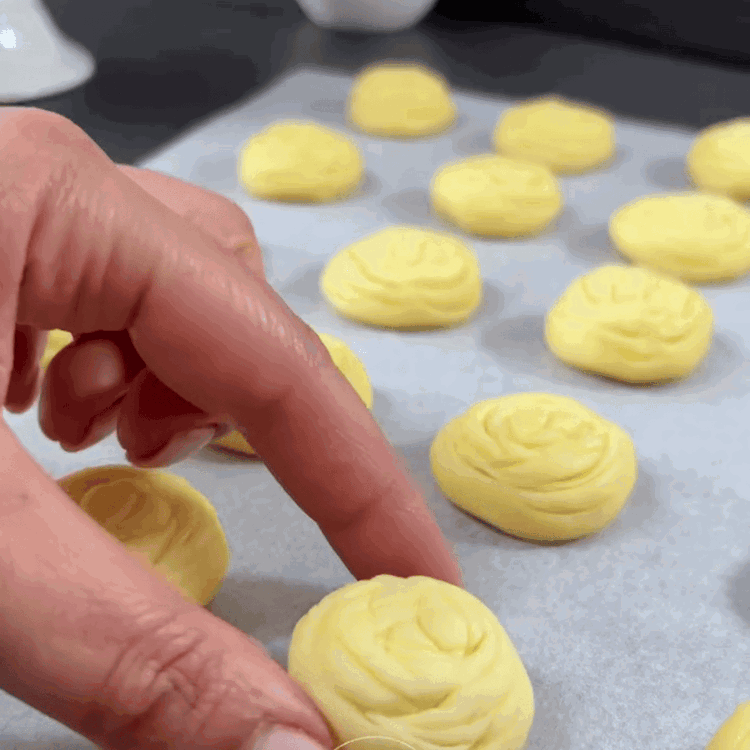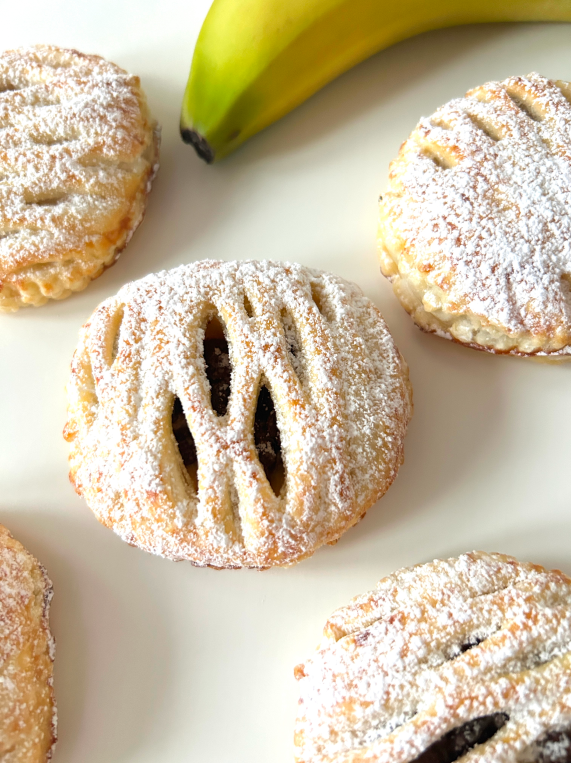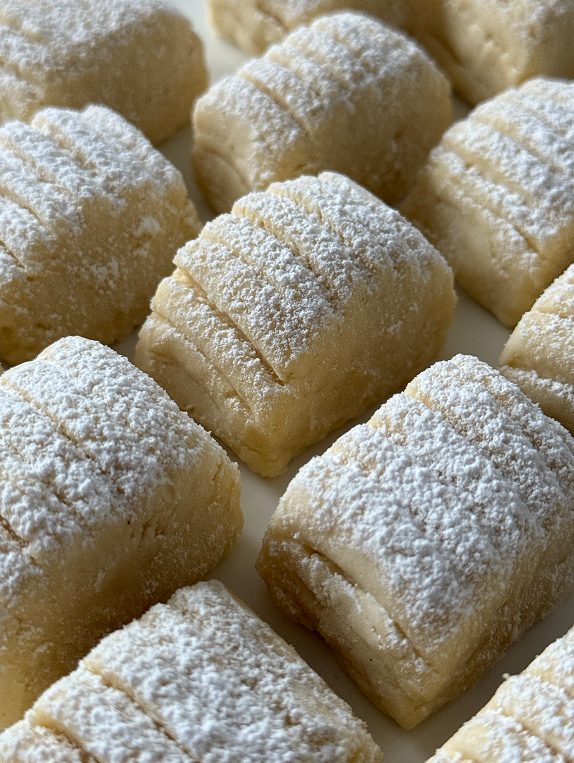Achieving the ideal texture in Rosewater Cookies involves a careful balance of ingredients and technique. The creaming method—mixing the softened butter, sunflower oil, and powdered sugar until fluffy—is crucial, as it incorporates air into the dough, creating a light and tender cookie. The inclusion of cornstarch also plays a significant role, tenderizing the cookie and contributing to its melt-in-your-mouth quality. When mixing the dry ingredients with the wet, be careful not to over-knead; this can lead to a tougher texture. Instead, knead just until combined. After shaping the dough, gently pressing the balls and creating indentations not only gives them their signature look but helps them bake evenly. Finally, allow the cookies to cool completely on the sheet to maintain their delicate structure before dusting with powdered sugar.

